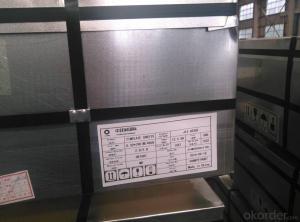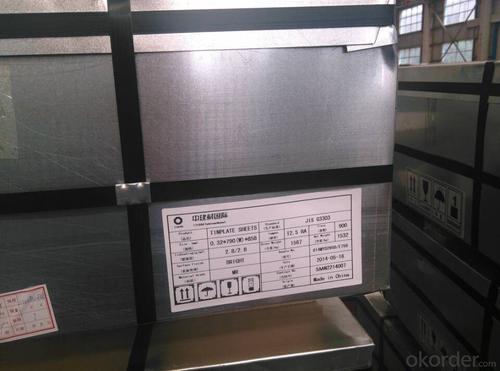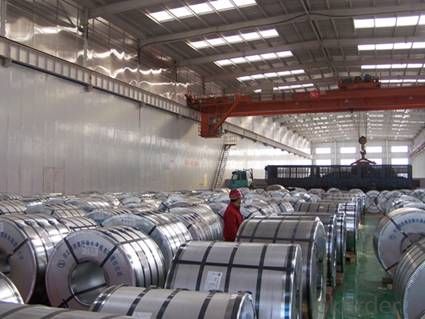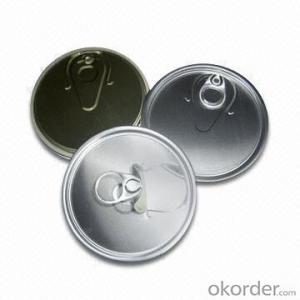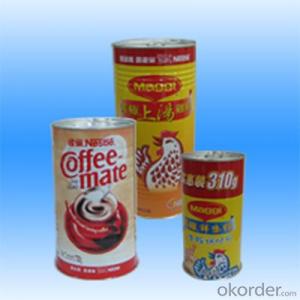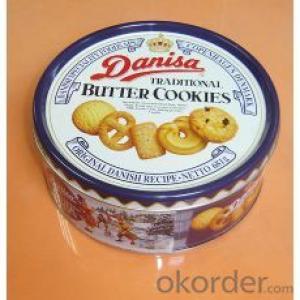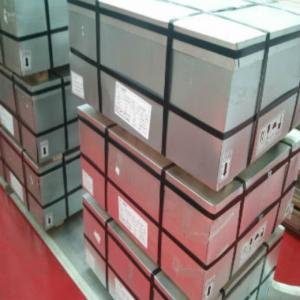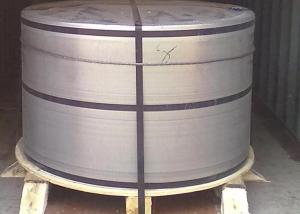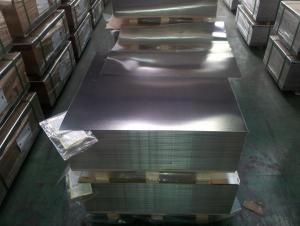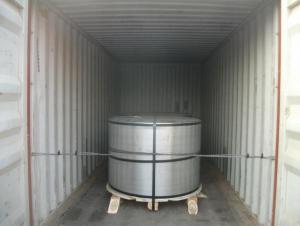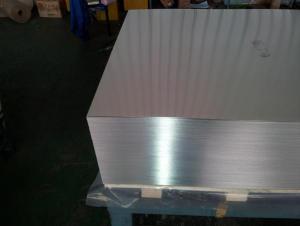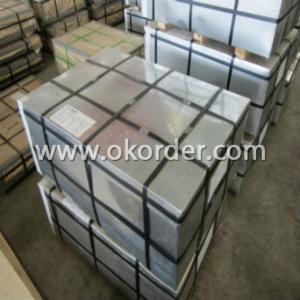MR Material Tinplate For Bottle Caps, DR
- Loading Port:
- Tianjin
- Payment Terms:
- TT OR LC
- Min Order Qty:
- 25 m.t.
- Supply Capability:
- 40000 m.t./month
OKorder Service Pledge
OKorder Financial Service
You Might Also Like
1.Usage
Tinplate is widely used for making all types of containers, containing industrial usage such as paint can, oil can, aerosol cans etc., and food cans like milk powder cans, tomato paste can, dry food cans etc.
2. Specification
standard: GB/T2520, JIS G3303, DIN EN10202
Material: MR /SPCC
Thickness available: 0.16-0.50MM
Width available: 600~1050MM
Temper grade: T1 – DR8
Tin coating: ordinary 2.8g/2.8g, 5.6g/5.6g and others
Package: sea worthy export package.
Applications: Tin can for chemicals & paint cans, industrial cans, food cans
3. Quality Level
our tinplate quality ranks 1st level in China, very good and stable, similar to Bao Steel, Posco etc.
4. Our factory photo & equipments

5. Our Overseas Markets:
Our tinplate has been exported to more than 50 countries, quality be approved and welcome by all of our customers. Furthermore, in the year 2014, we have more than 10 overseas warehouses all over the word, located in KSA, UAE, Oman, Russia, Kuwait, Qatar, Oman, Chile, Brazil etc.
6. FAQ
a. what's the annual output?
about 500,000 tons per year.
b. where's the raw matrial from?
our hot rolled coil is purchased from Capital Steel and other state owned mill, with quite good quality.
c. how long is the delivery time?
normally for SPCC about 45~55 days, while 65~75 days for MR material
d. how to control the quality during production process?
inside our workshop, we have MES syestem. It realizes the optimization of the production procedure in the workshop. It could record each step of the whole production procedures, and if some problem appears, factory could easily found and take action, it’s quite helpful to monitor and control the quality.
- Q: What are the common packaging formats for tinplate?
- The common packaging formats for tinplate include cans, containers, and tins.
- Q: How does tinplate packaging contribute to product protection against pests?
- Tinplate packaging contributes to product protection against pests by creating a barrier that prevents pests from accessing the product. The sturdy and tightly sealed nature of tinplate packaging makes it difficult for pests like insects or rodents to chew through or penetrate the packaging. This helps to maintain the integrity and quality of the product by keeping pests away, ensuring that it remains safe and unaffected by any potential infestation.
- Q: How is the thickness of tinplate measured?
- The thickness of tinplate is typically measured using a specialized instrument called a micrometer, which accurately measures the distance between the surfaces of the tin coating.
- Q: How does tinplate packaging contribute to product protection against light?
- Tinplate packaging contributes to product protection against light due to its opaque nature. The tin coating prevents light from penetrating the packaging, thereby minimizing exposure to harmful UV rays. This feature helps preserve the quality and integrity of light-sensitive products, such as food, beverages, and pharmaceuticals, by preventing light-induced degradation and spoilage.
- Q: How is tinplate coated with tin?
- Tinplate is typically coated with tin through a process called electroplating, where a thin layer of tin is deposited onto the surface of the tinplate using an electric current. This electroplating process helps to protect the iron or steel base of the tinplate from corrosion and also provides a smooth, shiny finish.
- Q: What is the global demand for tinplate?
- The global demand for tinplate is significant and continuously growing. Tinplate is widely used in various industries such as packaging, electronics, automotive, and construction. Its corrosion resistance, durability, and versatility make it a preferred choice for packaging materials, especially in the food and beverage sector. With the increasing population and urbanization, the demand for tinplate is expected to further rise in the coming years, driven by factors like increasing consumer goods consumption and technological advancements.
- Q: What is the average lifespan of tinplate packaging?
- The average lifespan of tinplate packaging depends on various factors such as usage, storage conditions, and handling. However, tinplate packaging is known for its durability and longevity, and with proper care, it can last for several years or even decades.
- Q: How does tinplate packaging contribute to product tamper resistance?
- Tinplate packaging contributes to product tamper resistance by providing a strong and durable barrier that is difficult to breach without leaving visible signs of tampering. Its robust construction and tamper-evident features such as seals, closures, or breakable seals make it challenging for unauthorized individuals to access the product undetected.
- Q: How does tinplate perform in terms of resistance to UV radiation?
- Tinplate generally provides good resistance to UV radiation due to its metallic coating, which acts as a protective barrier against the damaging effects of the sun's rays. However, prolonged exposure to intense UV radiation can still cause some degree of degradation over time.
- Q: How does tinplate contribute to the preservation of photographic equipment?
- Tinplate contributes to the preservation of photographic equipment by providing a protective coating that helps prevent corrosion and damage caused by moisture, dust, and other external factors. Its durable and rust-resistant properties make it an ideal material for manufacturing camera bodies, lens caps, and other components, ensuring the longevity and functionality of the equipment.
Send your message to us
MR Material Tinplate For Bottle Caps, DR
- Loading Port:
- Tianjin
- Payment Terms:
- TT OR LC
- Min Order Qty:
- 25 m.t.
- Supply Capability:
- 40000 m.t./month
OKorder Service Pledge
OKorder Financial Service
Similar products
Hot products
Hot Searches
Related keywords
